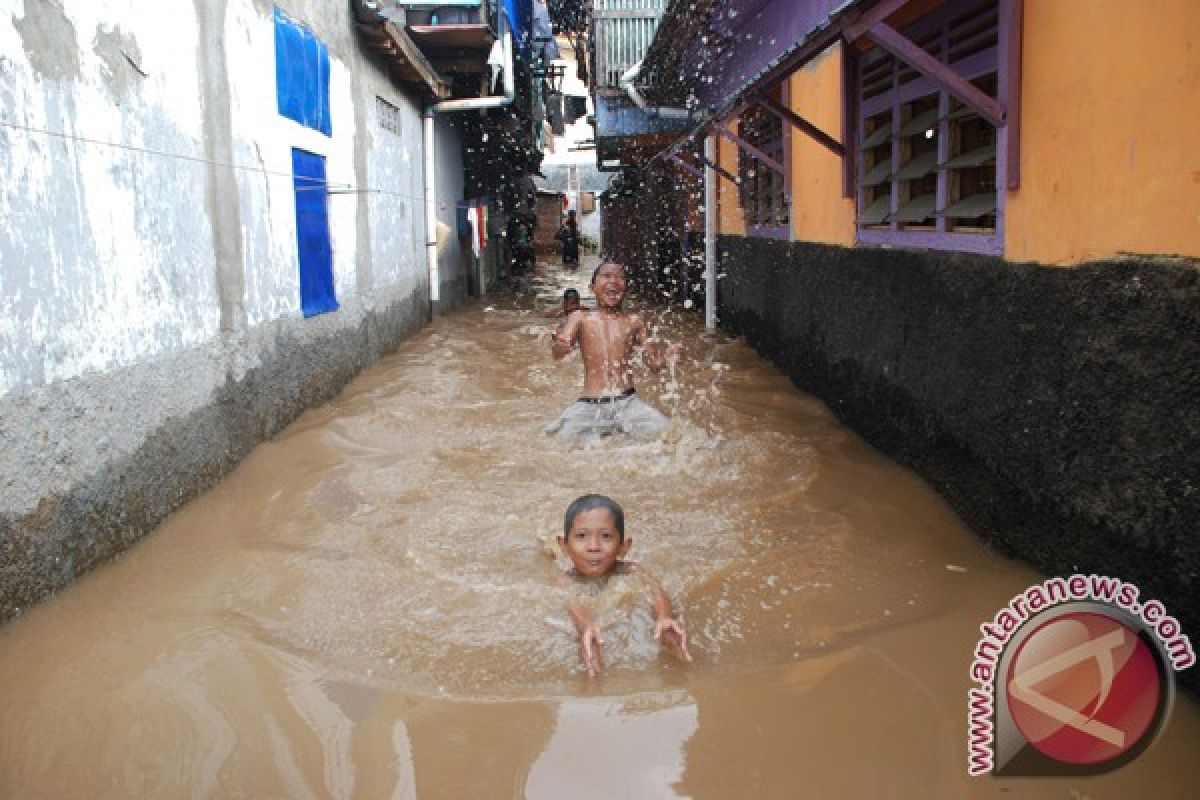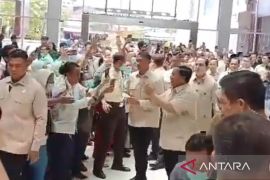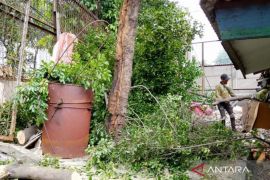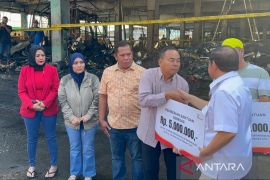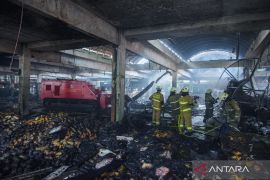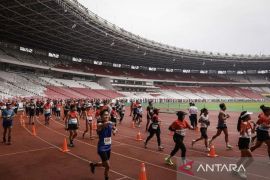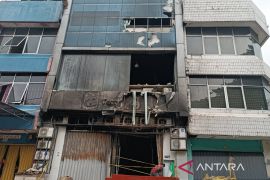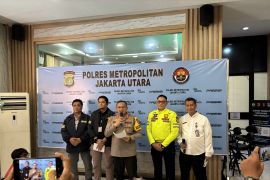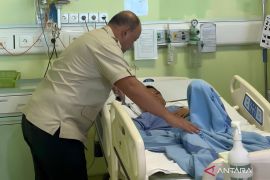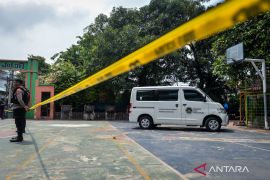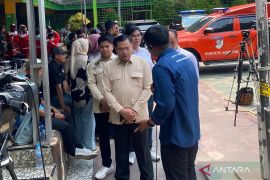Instead of coming up with a solution to handle the annual flooding of Jakarta, especially during the rainy season, policy makers and hydrologists have been unable to reach a consensus regarding an appropriate solution for this problem.
Dutch national Jan Pieterzn Coen built Batavia nearly four centuries ago as a waterfront city, and constructed canals in Jakarta, which were similar to ones in Amsterdam in the Netherlands.
"The plan is there, but how can you implement it? It needs support, involvement, cooperation of all stakeholders, despite their personal wishes, desires and interests," Dr.Wim Ravesteijn, an associate professor and head of the Technology Dynamics and Sustainable Development at the Technology University of Delft (TUD) in the Netherlands said recently, during a colloquium held by the Indonesian Student Association (PPI) Delft.
Ravesteijn, who has also authored the book, "For Profit and Prosperity, The Contribution made by Dutch Engineers to Public Works in Indonesia" said the problem of flooding in Jakarta requires not only the role of technical engineering but also that of engineering policy experts.
Causes of flooding
According to a Masters student at the Water Management Department at Institute for Water Education (UNESCO-IHE), Kurniati Widyastuti, solutions designed to address flooding in Jakarta should identify the root cause of the problem, which can actually be found in the field.
"The cause of the flooding is very complex, and it can be due to any social, environmental or policy-related reasons, or because of a combination of all three," she said.
Ravesteijn agreed and pointed out that a proposal, which might seem a solution at first, can also create new problems.
"What exactly is the problem and who is facing the problem should be carefully noted, because different persons or affected groups have different perceptions," he stated.
Ravesteijn, who has also written a dissertation, titled "The Lords of the Auspicious Waters, Irrigation and the Colonial State in Java, 1832-1942," said he was inspired to write the dissertation by the river Bengawan Solo in Central Java, and also pointed out some of the causes for flooding in Jakarta which can be referenced to find new solutions.
Geographically, around 40 percent of Jakarta is made up of low lying areas, which are prone to flooding, especially during the season of the west monsoon rainfall, which impacts 13 rivers including the Ciliwung and Angke, which cut through Jakarta en route to the Java Sea.
This situation is exacerbated by the widespread deforestation in the water catchment areas, which has reduced the land`s capability of retain any rainwater. Rapid population growth has triggered other problems such as the need for potable water, and excessive water pumping has lead to land subsidence and the consequent rise in the sea level.
In addition to this, drains blocked with disposed waste also restrict the flow of water, which has happened in the instance of the Pluit reservoir, and makes the problem of flooding in Jakarta even more complicated.
Preventive planning
The Dutch were aware of Jakarta`s vulnerability at the time and so the city`ss struggle against floods was initiated by J.P.Coen, who established the "Burgelijke Openbare Werken" (BOW) or the Department of Housing Development and Infrastructure (Public Works) in Batavia in 1854.
Ravesteijn pointed out that when floods hit Batavia in 1918, water management engineer Herman van Breen proposed the idea of constructing a western flood canal and an eastern flood canal to help drain out water from the flooded areas. The concept was based on controlling the water volume discharged into Batavia by as many as 13 rivers.
The runoff water would be diverted through the left and the right side of the city into the sea. Later in 1919 and 1920, the "Manggarai" and "Karet" floodgates were built in Central Jakarta, which helped reclaim the low lying areas.
The "Oosterslokkan" or "Ciliwung-Batavia" and the "Westerslokkan" or "Ciliwung-Cisadane" gates were built in the 1800s and the Mookervaart`s floodgate in Tangerang linking the Cisadane and Cidurian rivers, were constructed by Van Breen, Polderman and Dumont in the early 1900s for shipping and cleaning the canals` water in Batavia. However, Ravesteijn regretted the current deplorable condition of the polluted canals.
"Mookervaart is a small floodgate but its function is important for controlling the flow of water. It used to maintain the water flow coming into the city and for keeping it clean, but its current condition is very different as it now holds contaminated black water, which has an unpleasant odor," he said.
Need for integrated management
There is a need for integrated water resource management to deal with the flooding in Jakarta, and a search must be conducted for alternative sources of clean water, that will avoid interference with the land stability and prevent the sea level from rising.
"The management of integrated water catchment is also important on a regional basis," Ravesteijn said.
Inter-basin canal management for transferring excess water from the west of Java, which is wet, to the east, which is dry, was introduced by Van Blommestein for increasing the volume of water storage in the basin rivers, especially in the Ciliwung and for building small reservoirs in Jakarta, Bogor, Depok, Tangerang and Bekasi.
However, Ravesteijn said that the application of engineering alone will prove to be insufficient in answering the problem of flooding in Jakarta.
"The asset management for the maintenance of the sluices or floodgates and keeping the water constantly clean and waste free needs to be done with the help of an institutional strategy," he noted.
Public resistance and differences in political points of view must be addressed properly by involving all stakeholders through a top-down management style and through public initiatives, he added.
Eka Budiarto, a doctoral student at TU Delft`s Faculty of Electrical Engineering, Mathematics and Computer Science, said every successive government or leaders in Indonesia at the national or local level have almost always changed the policies dealing with this problem, which has rendered a lot of the work incomplete.
"Many plans have been proposed to address flooding in Jakarta, but nothing has been accomplished. I think this is because the policies are constantly modified or changed," he said.
Budiarto also suggested the creation of a guide book that contains a description of all possible solutions proposed till date for solving the problem of flooding in Jakarta, which can help in chalking out a detailed plan and implementing it effectively in the field for achieving the expected results.
"The book should contain an index, listing out the various quantitative parameters of the flooding and summarize the problem solving alternatives proposed by various sources and stakeholders," he stated.
"Anyone who wants to determine new solutions for the problem can refer to the guidelines in the book," he explained.
Budiarto added that in order to maintain consistency, the preferred solution should be regulated so that it does not deviate too far from the modified strategy.
Expectation
Even though they occupied Indonesia for three centuries, the Dutch did not leave a history of colonialism but had also tried to make Batavia safe from floods through the hydrological constructions that were carried out during their rule. Although these mechanisms are no longer functioning optimally, they at least protect Jakarta from flooding.
"The Dutch did a lot, but it might not have been enough," Ravesteijn noted.
As flood conditions in Jakarta continue to become more complicated, he said he hoped that Indonesian students studying abroad, particularly in the Netherlands can solve the nation`s problems through the application of scientific and technological advancements as well as the experiences they garner during their studies abroad.
(KR-LWA)
Reporter: Libertina Widyamurti Ambari
Editor: Aditia Maruli Radja
Copyright © ANTARA 2012
